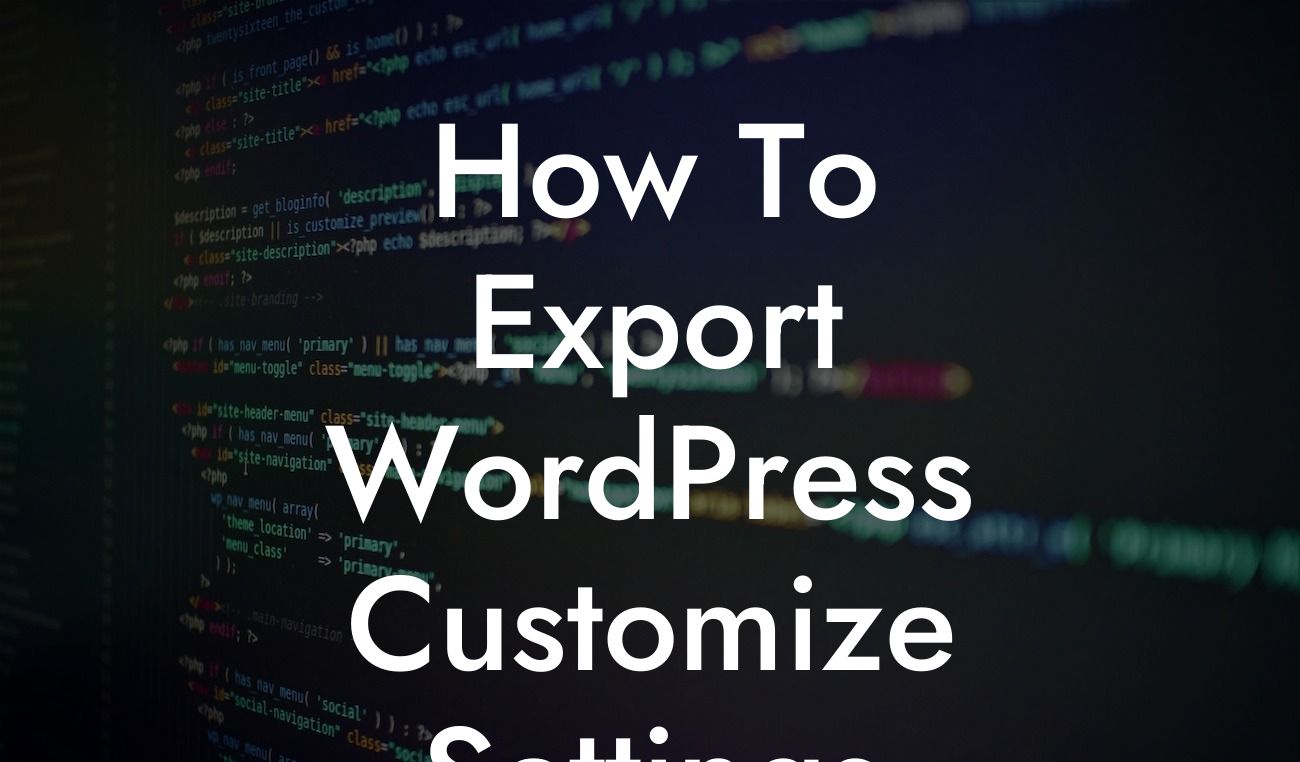Exporting your WordPress customize settings can be a game-changer for small businesses and entrepreneurs. It allows you to easily replicate your website's design, functionality, and customizations on another site or even on a staging server. Whether you're migrating to a new domain, setting up a mirror website, or simply want to create a backup, this guide will provide you with a detailed step-by-step process to export your WordPress customize settings effortlessly and efficiently. Get ready to take your online presence to the next level with DamnWoo's guidance and extraordinary plugins.
Exporting WordPress customize settings may sound complicated, but with the right approach, it becomes a breeze. Here's a detailed breakdown of the process:
1. Accessing the WordPress Customizer:
To export your customize settings, you need to locate the WordPress Customizer. It can be found by navigating to "Appearance" in your WordPress dashboard and then clicking on "Customize." This will open up the Customizer interface where you can make changes and adjustments to your website's design and functionality.
2. Selecting and Configuring the Theme Options:
Looking For a Custom QuickBook Integration?
Once you're in the Customizer, you'll see a range of options available. Go through each section and customize your website according to your preferences. This includes colors, fonts, header layouts, footer settings, and much more. Take your time to fine-tune every aspect to match your brand's identity and target audience.
3. Exporting the Customize Settings:
After you've adjusted everything to your liking, it's time to export the settings. Look for the "Export" button, typically located at the top or bottom of the Customizer sidebar. Click on it, and WordPress will generate a .dat file containing all your customize settings.
4. Saving the Exported File:
Once the export process is complete, you'll be prompted to save the .dat file on your computer. Choose a suitable name and directory to ensure you can easily locate it later. It's essential to keep this file safe for future use when importing the settings.
How To Export Wordpress Customize Settings Example:
Let's say you're a small business owner with a thriving e-commerce website. You've spent countless hours customizing your website's appearance, ensuring it aligns perfectly with your brand. Now, you want to replicate that design on a new website you've created. By exporting the WordPress customize settings, you can effortlessly transfer all those customizations to your new site, saving you time and effort. Plus, with DamnWoo's awesome plugins, you can enhance your online presence even further, offering an extraordinary user experience to your visitors.
Exporting your WordPress customize settings empowers you to streamline your online presence, replicate your design effortlessly, and create backups for peace of mind. With DamnWoo's extraordinary plugins and guidance, you can take your website to new heights. Explore our other articles and guides to discover more ways to supercharge your success. Don't forget to share this article with others who might find it valuable. Start exporting your WordPress customize settings today and embrace the extraordinary.













